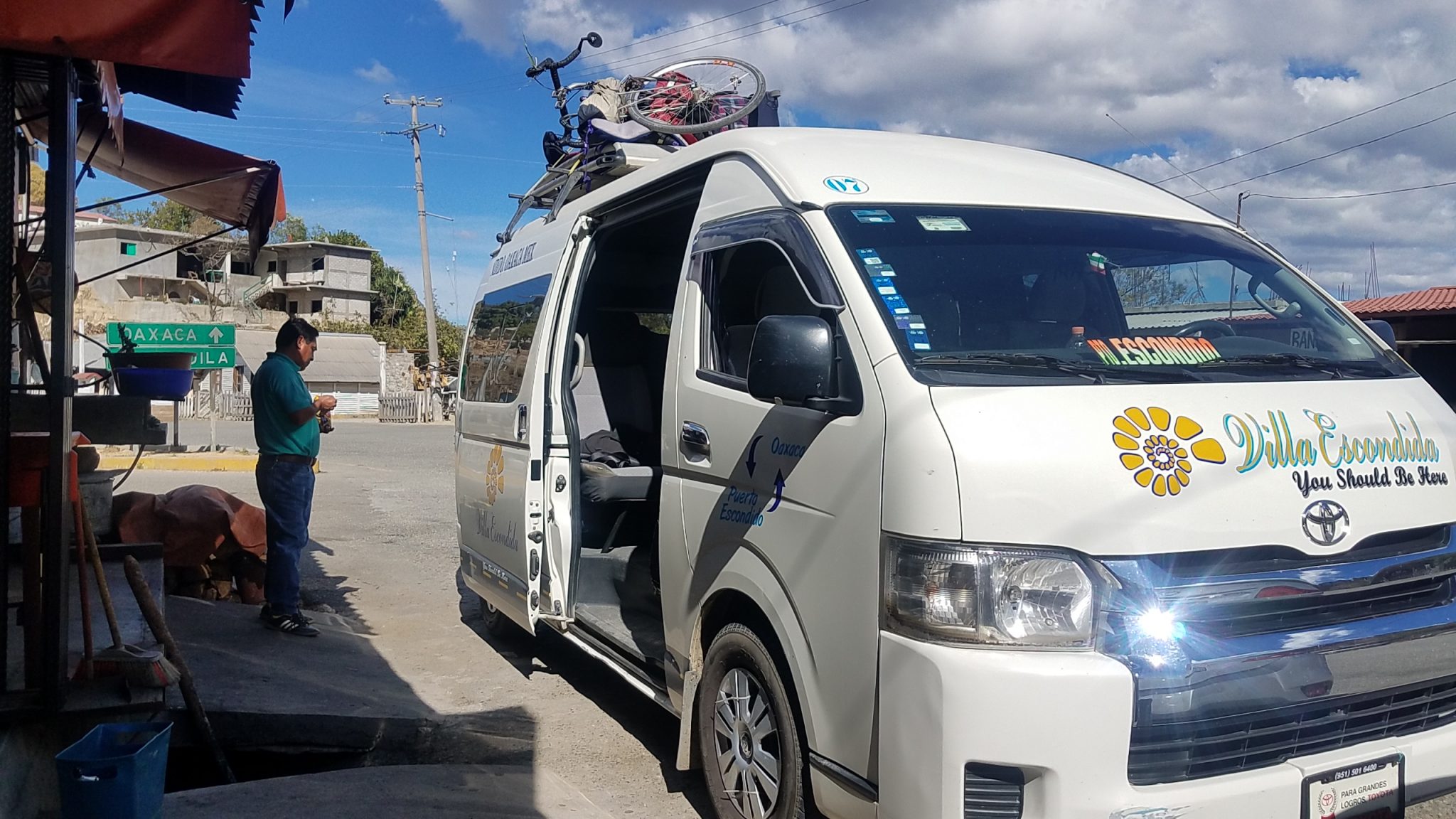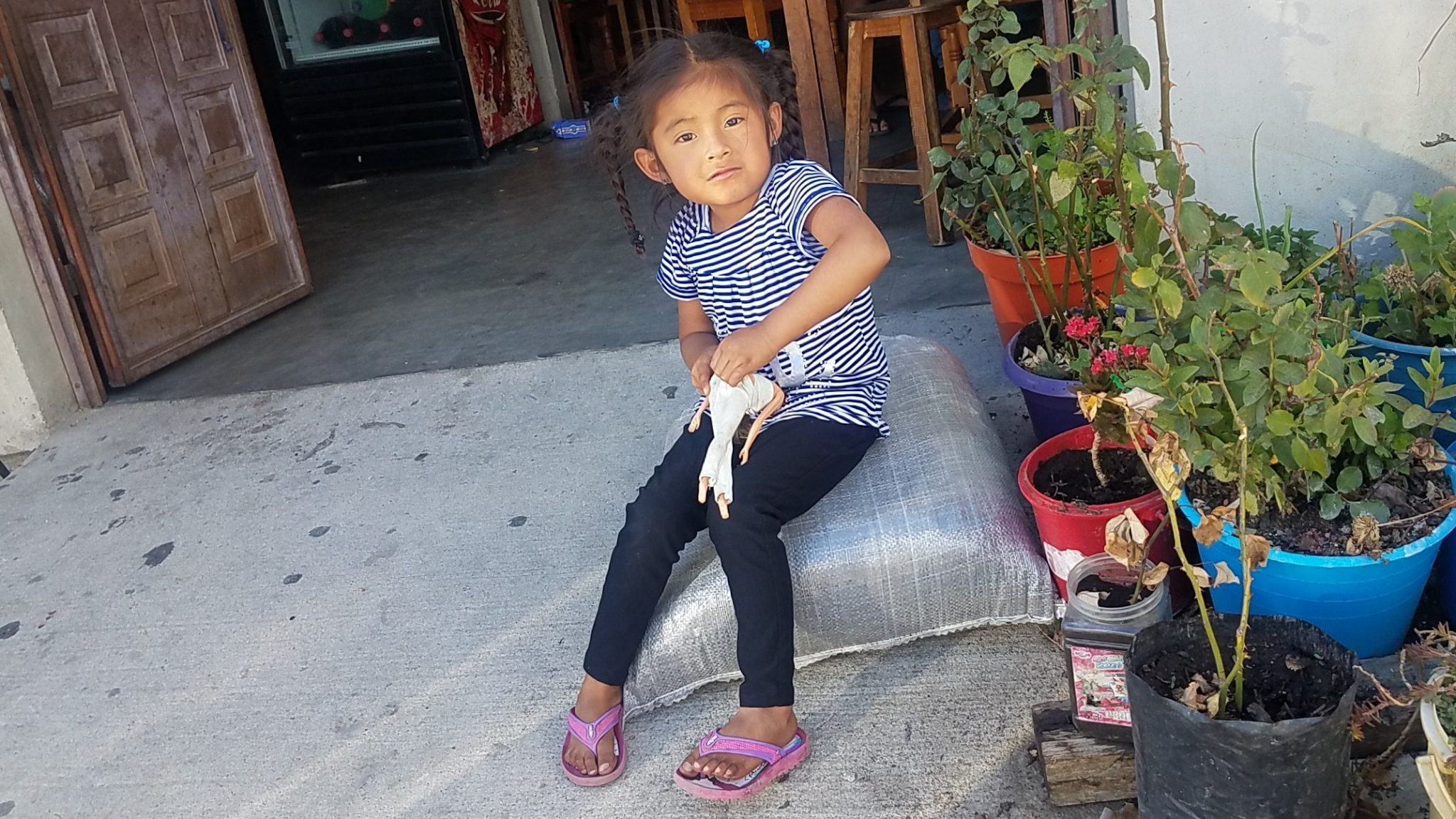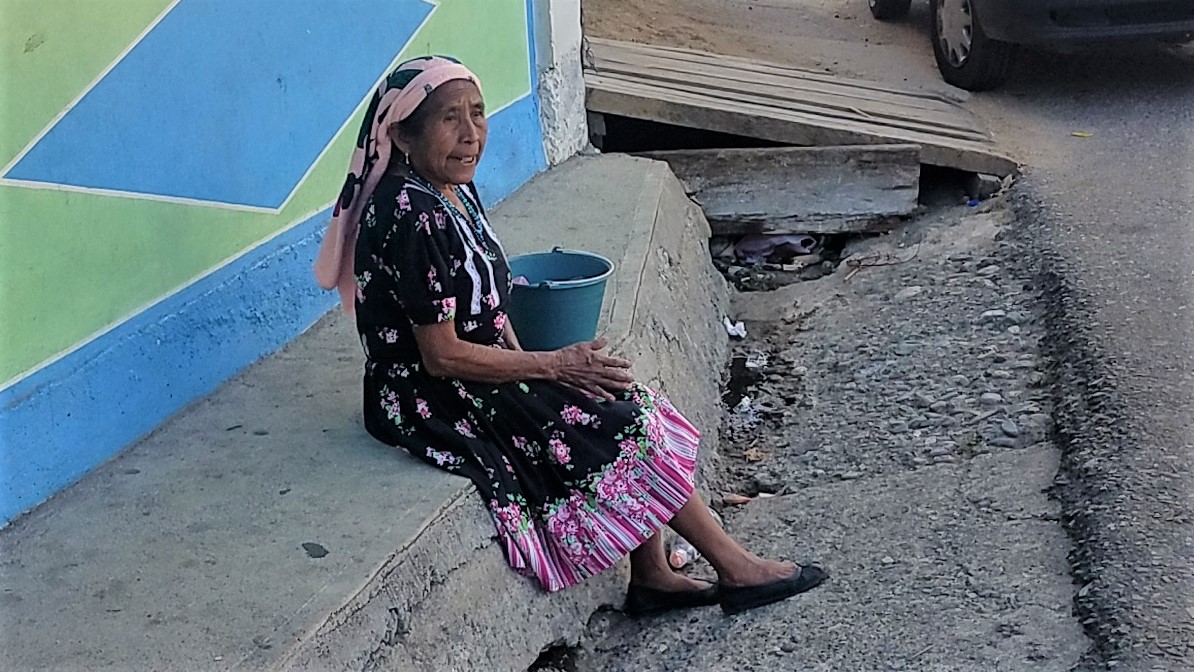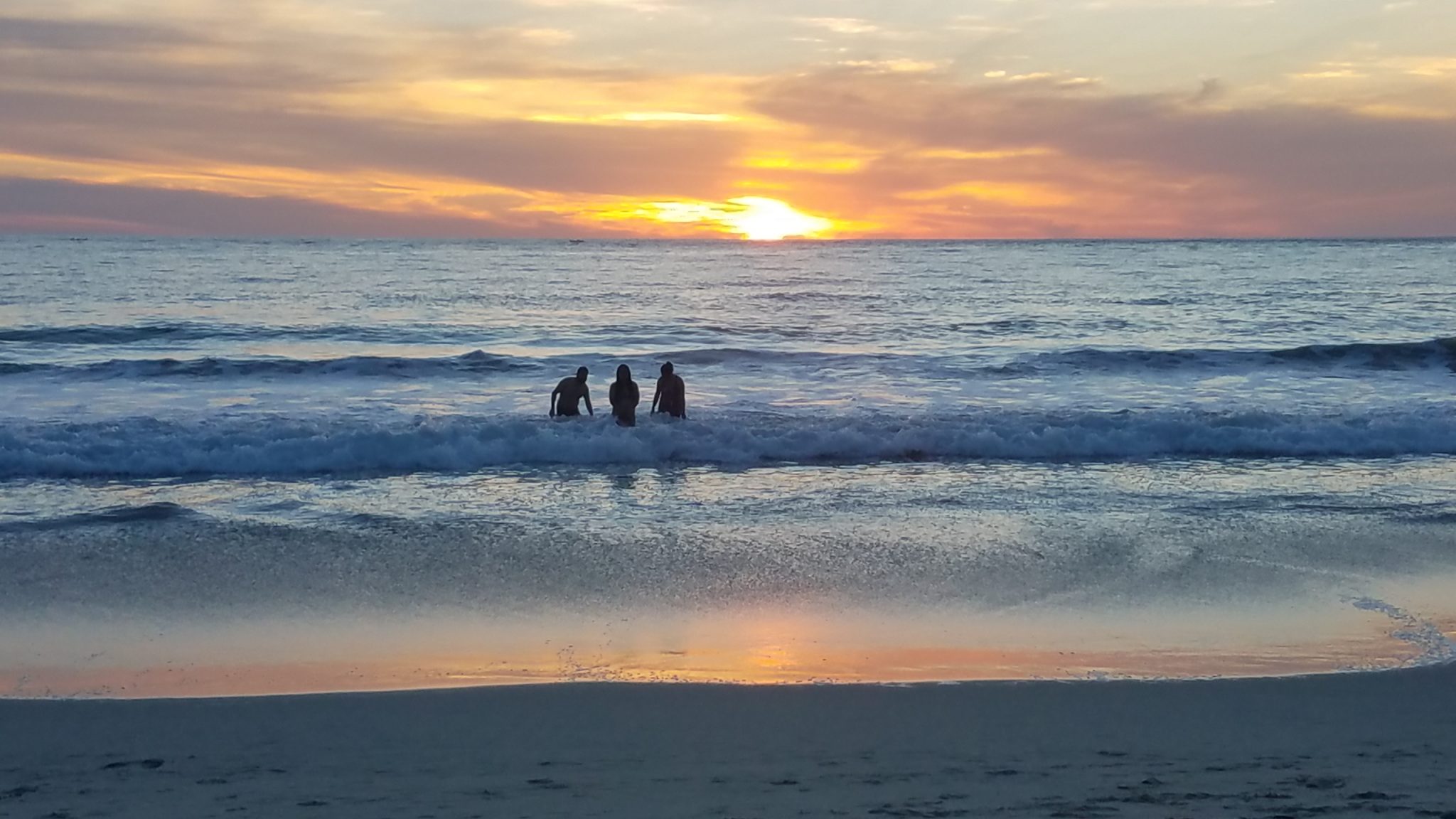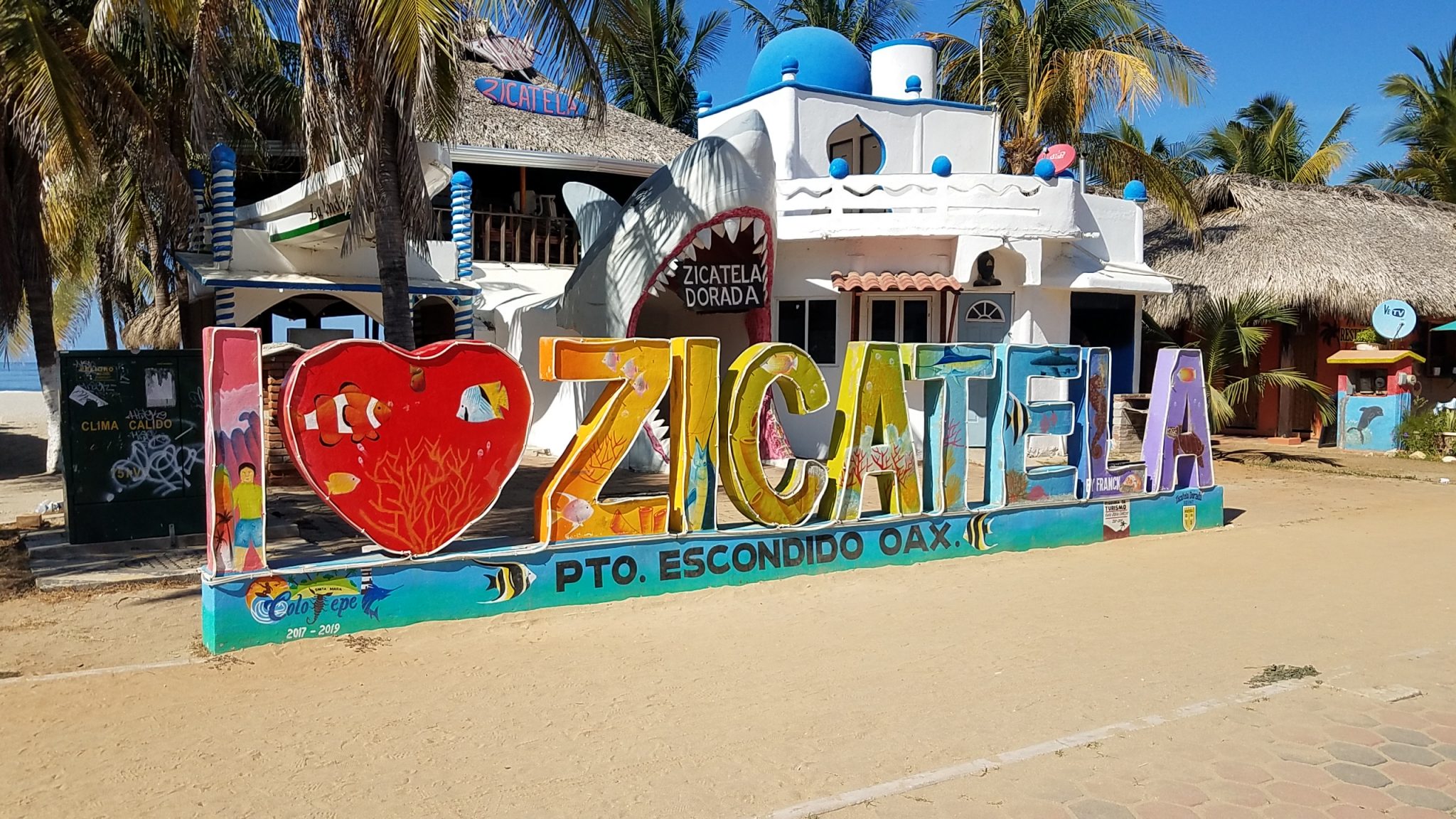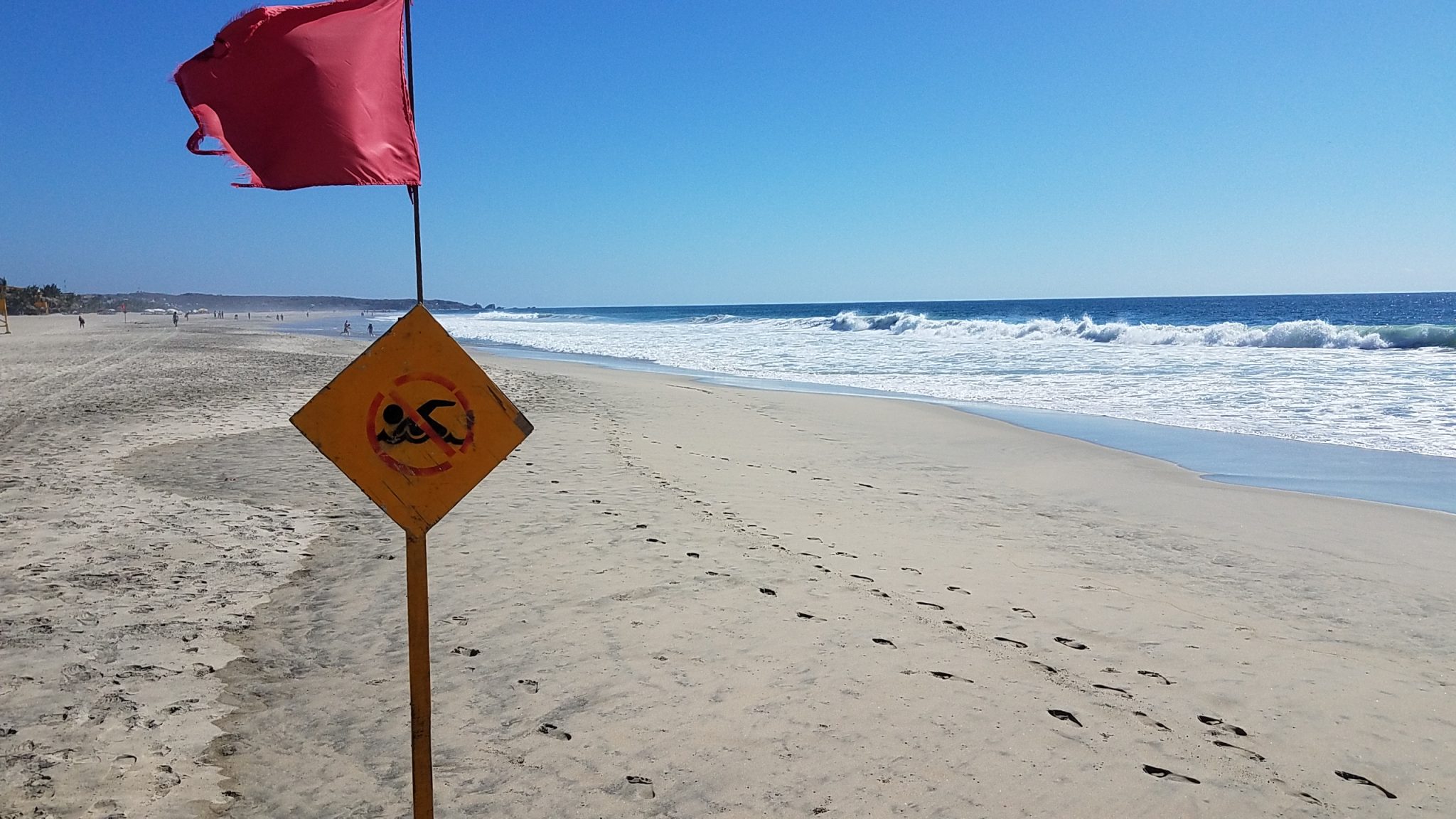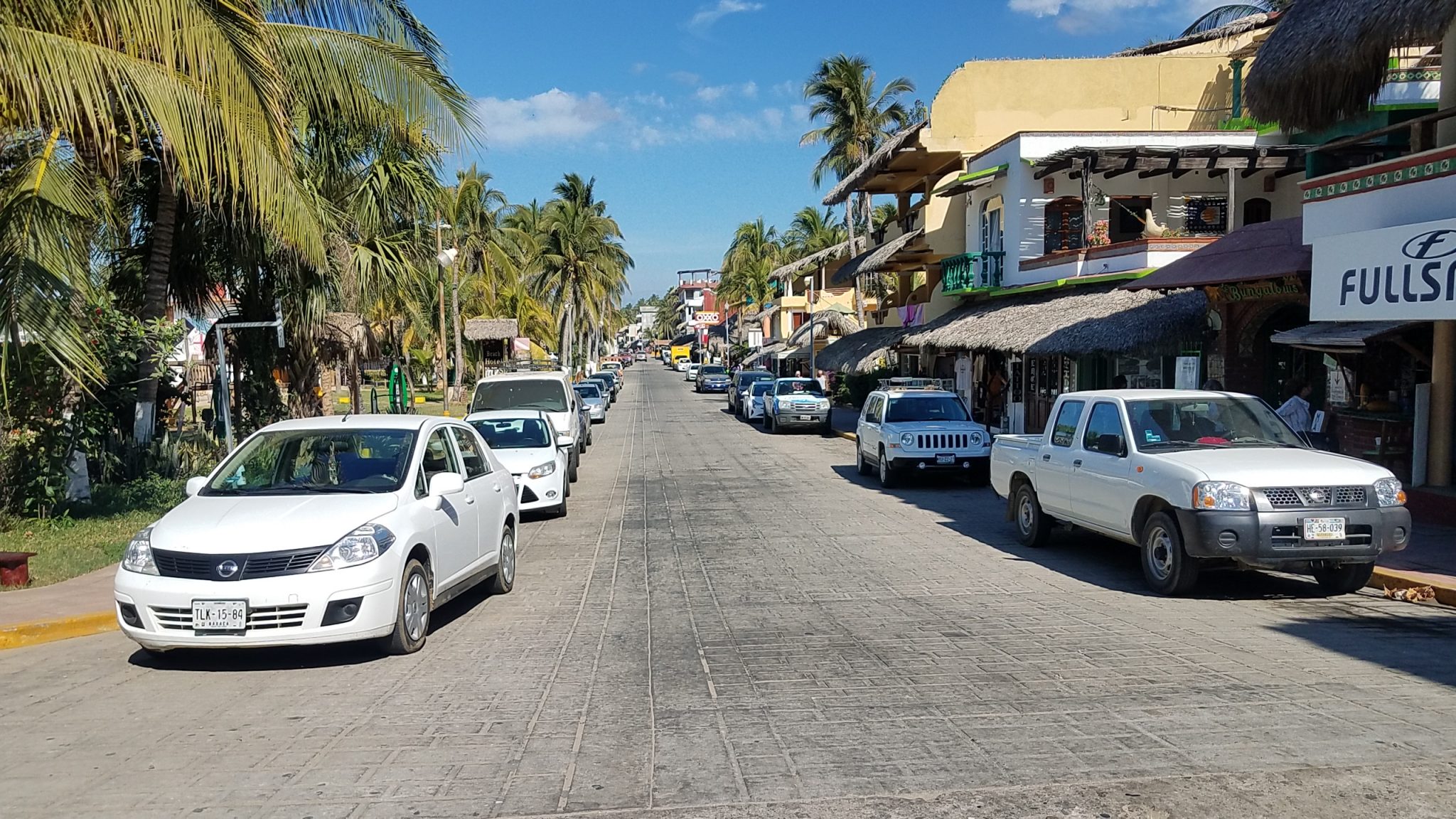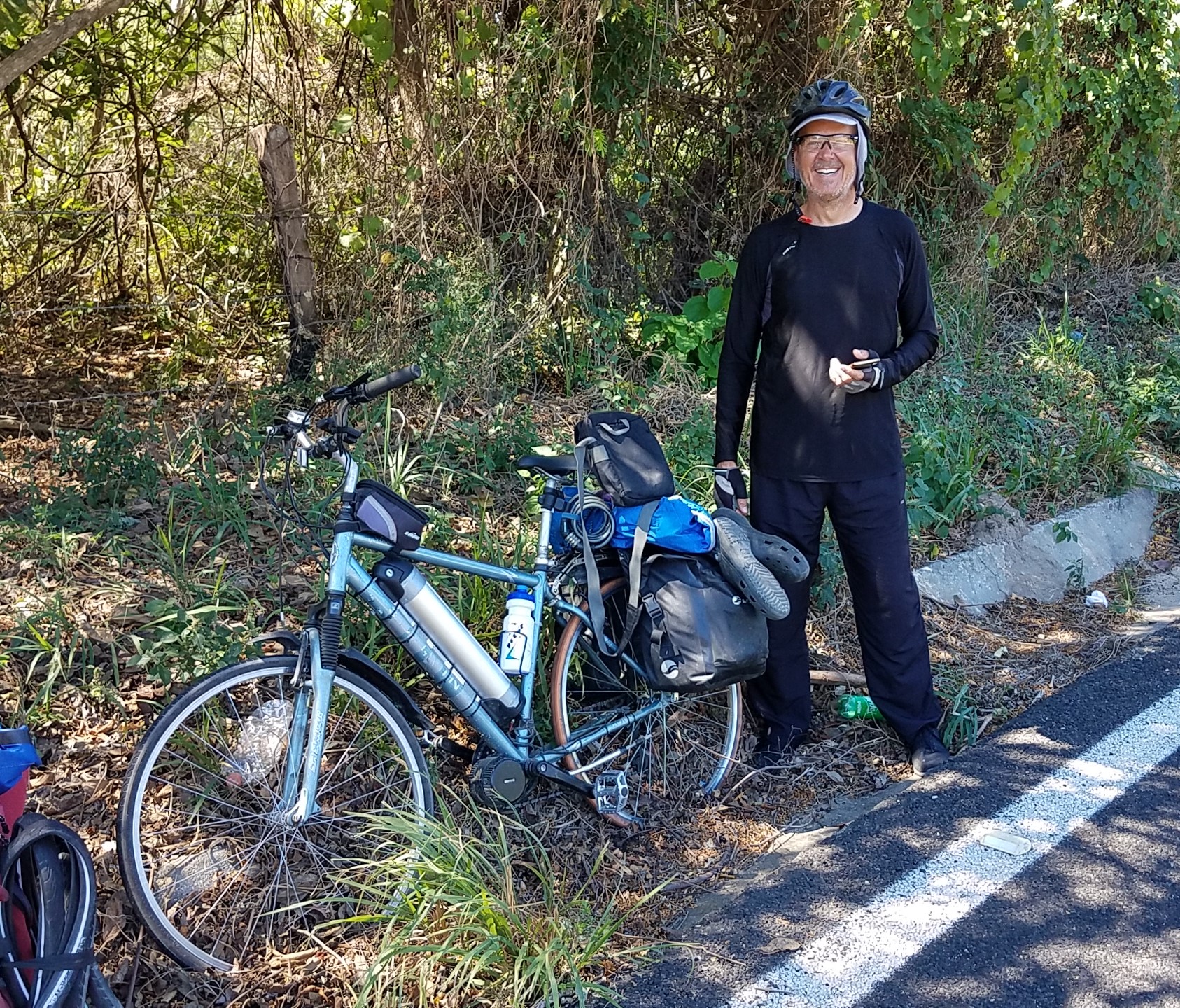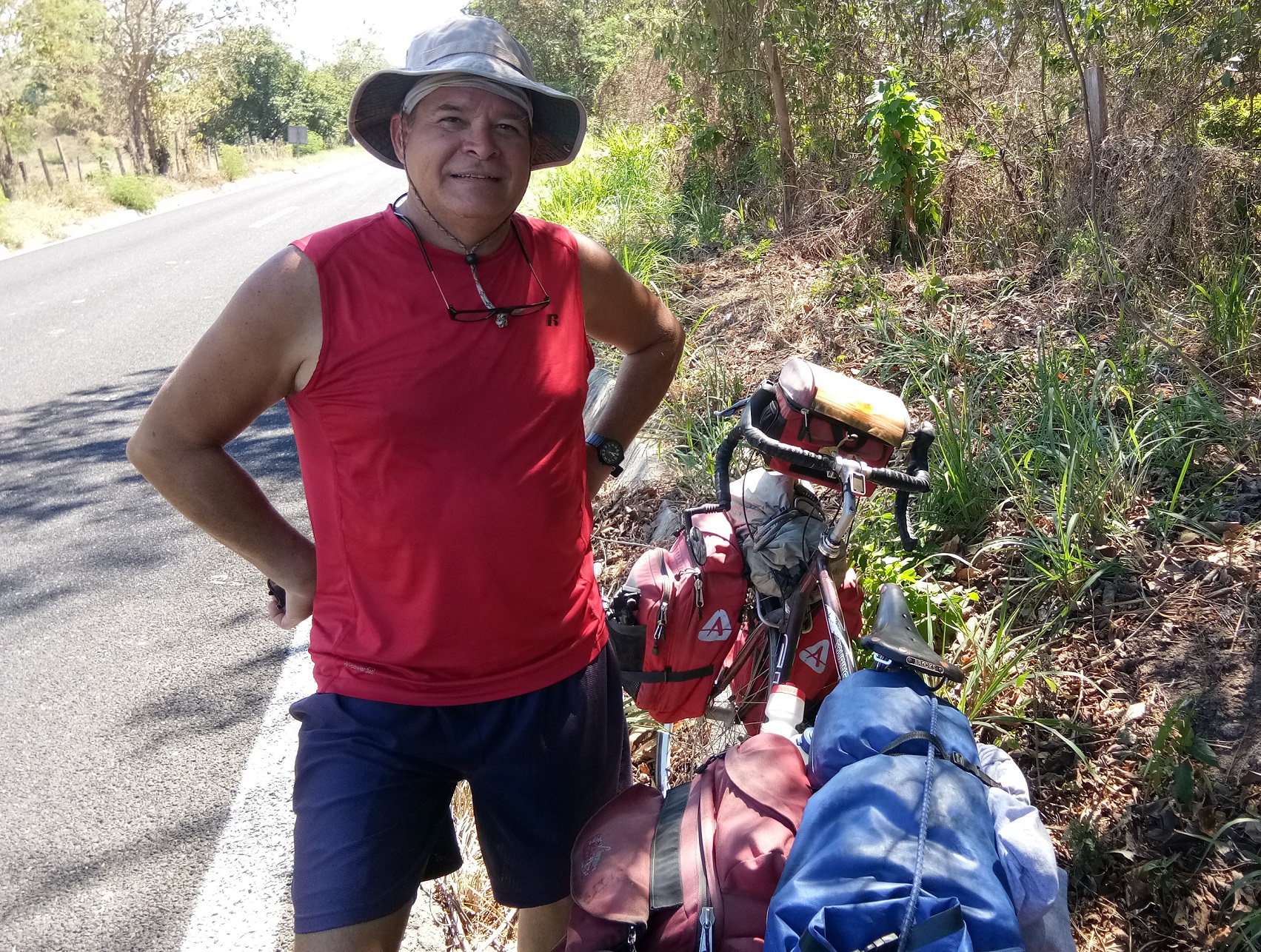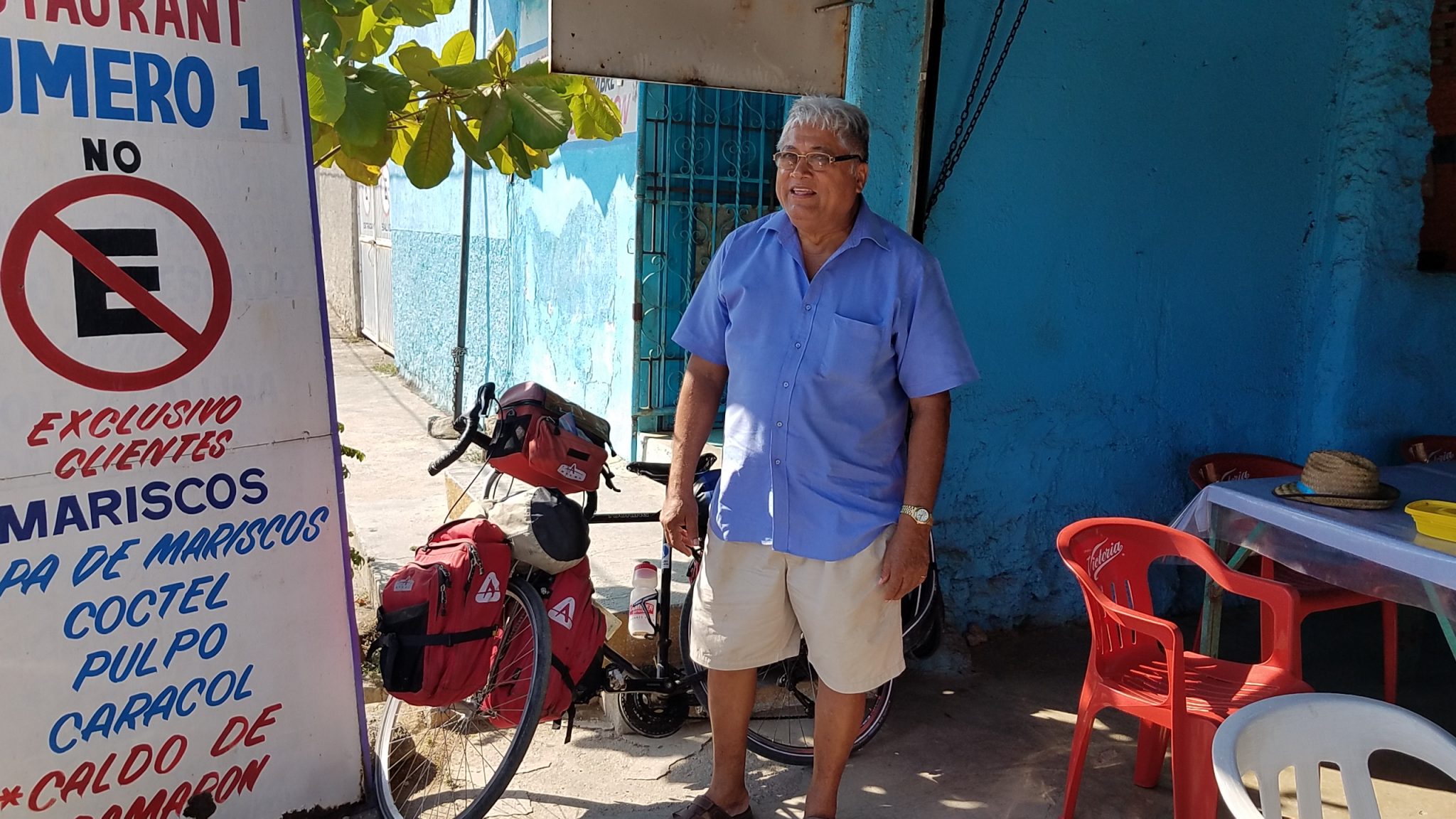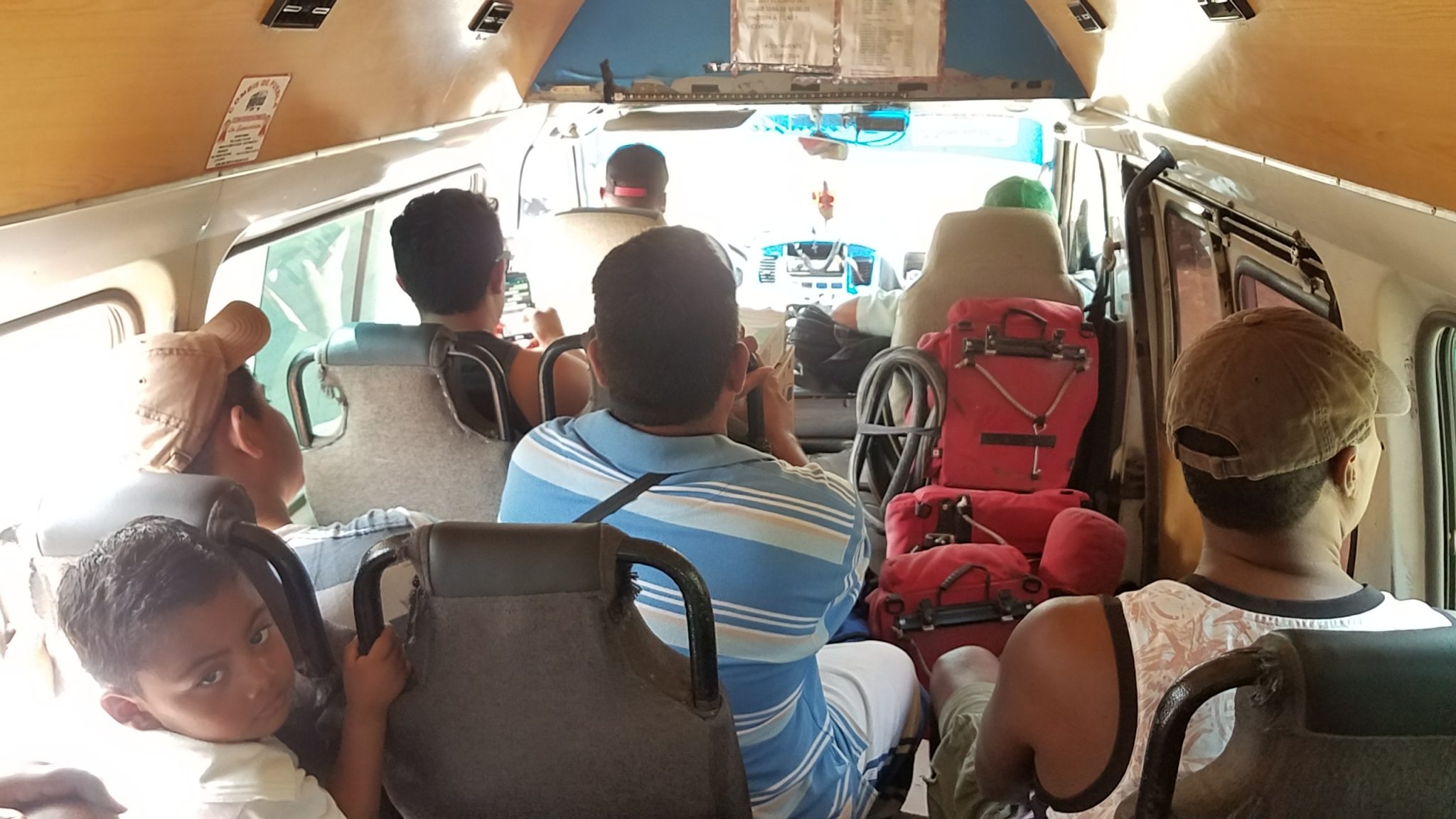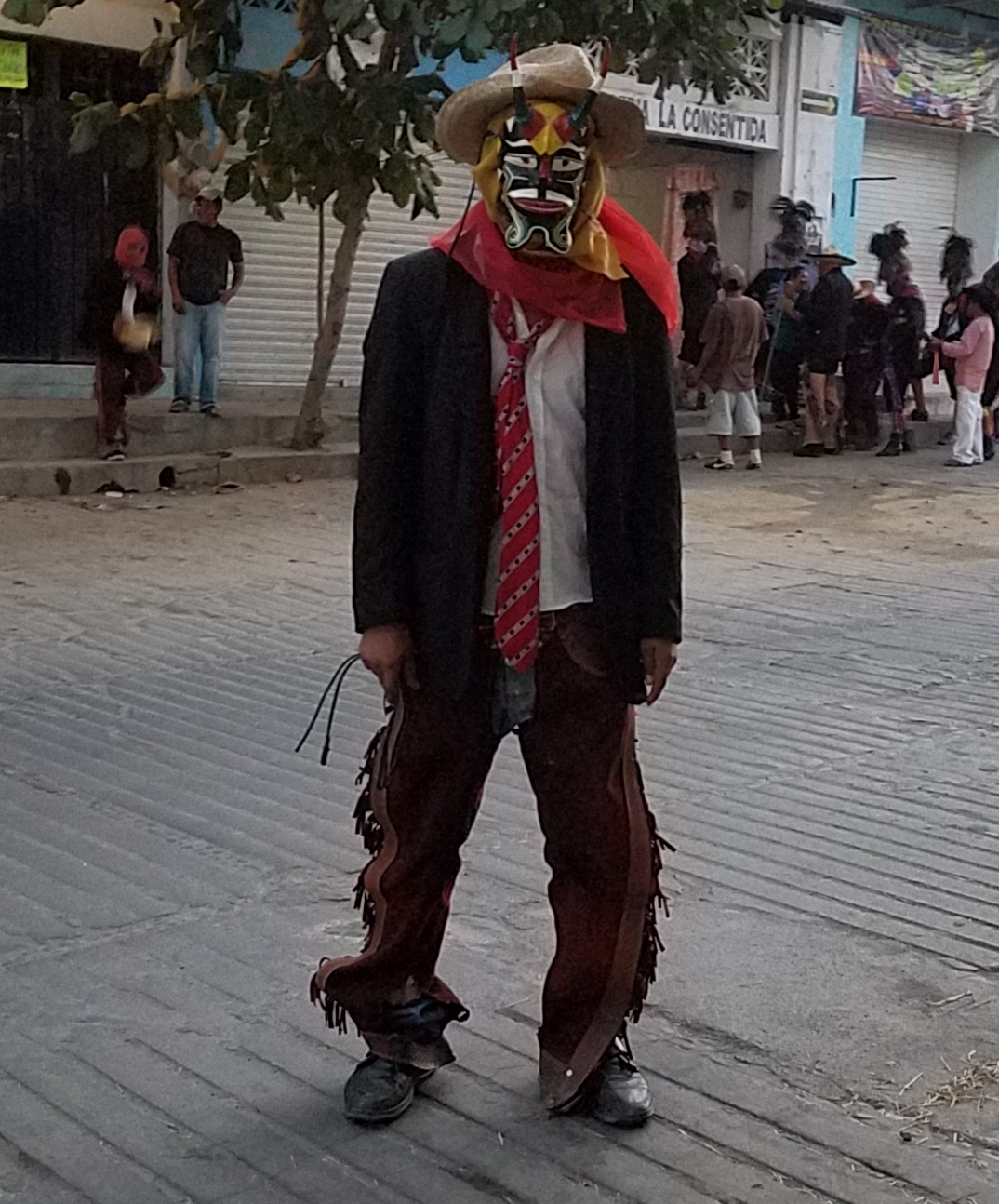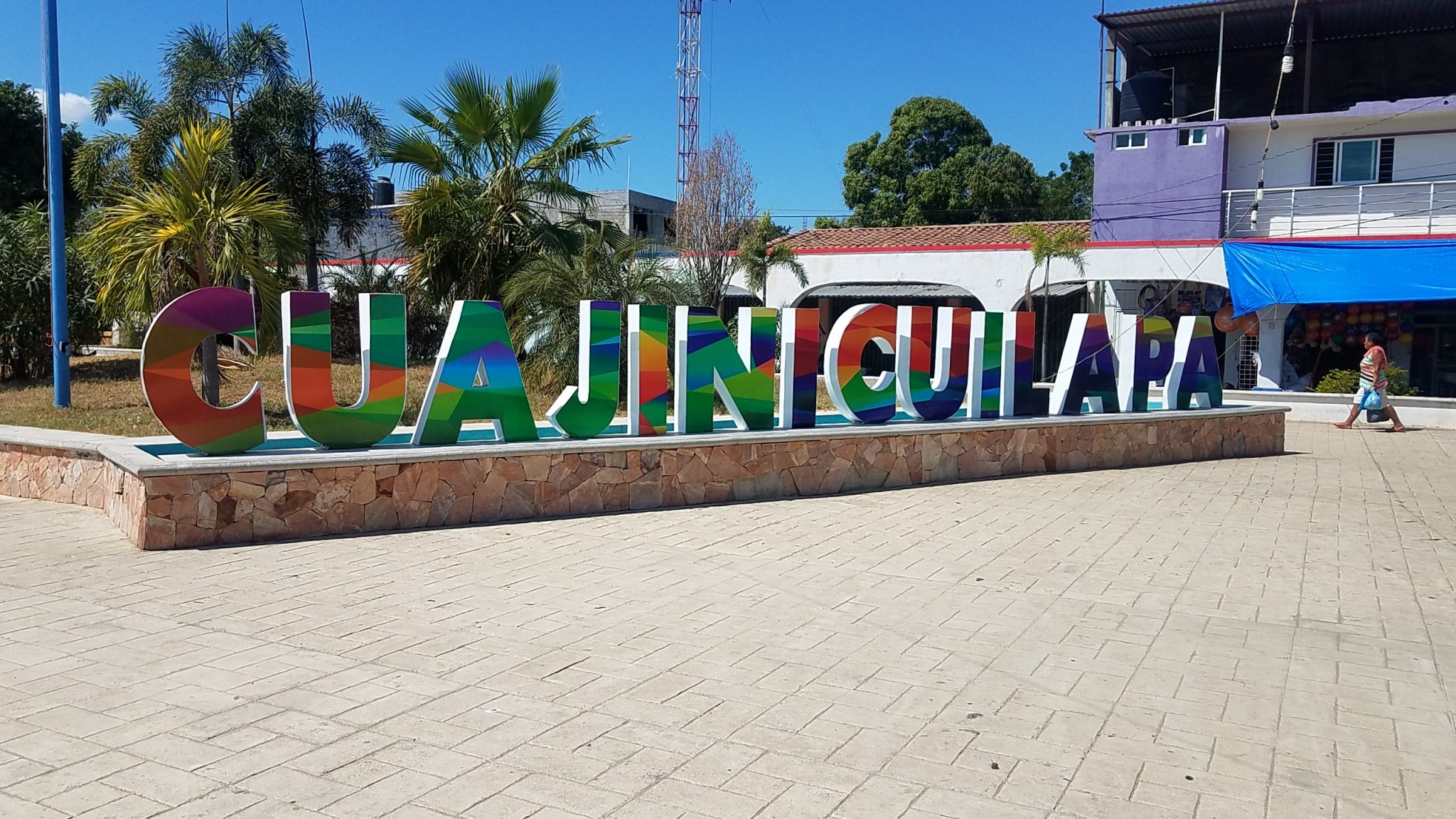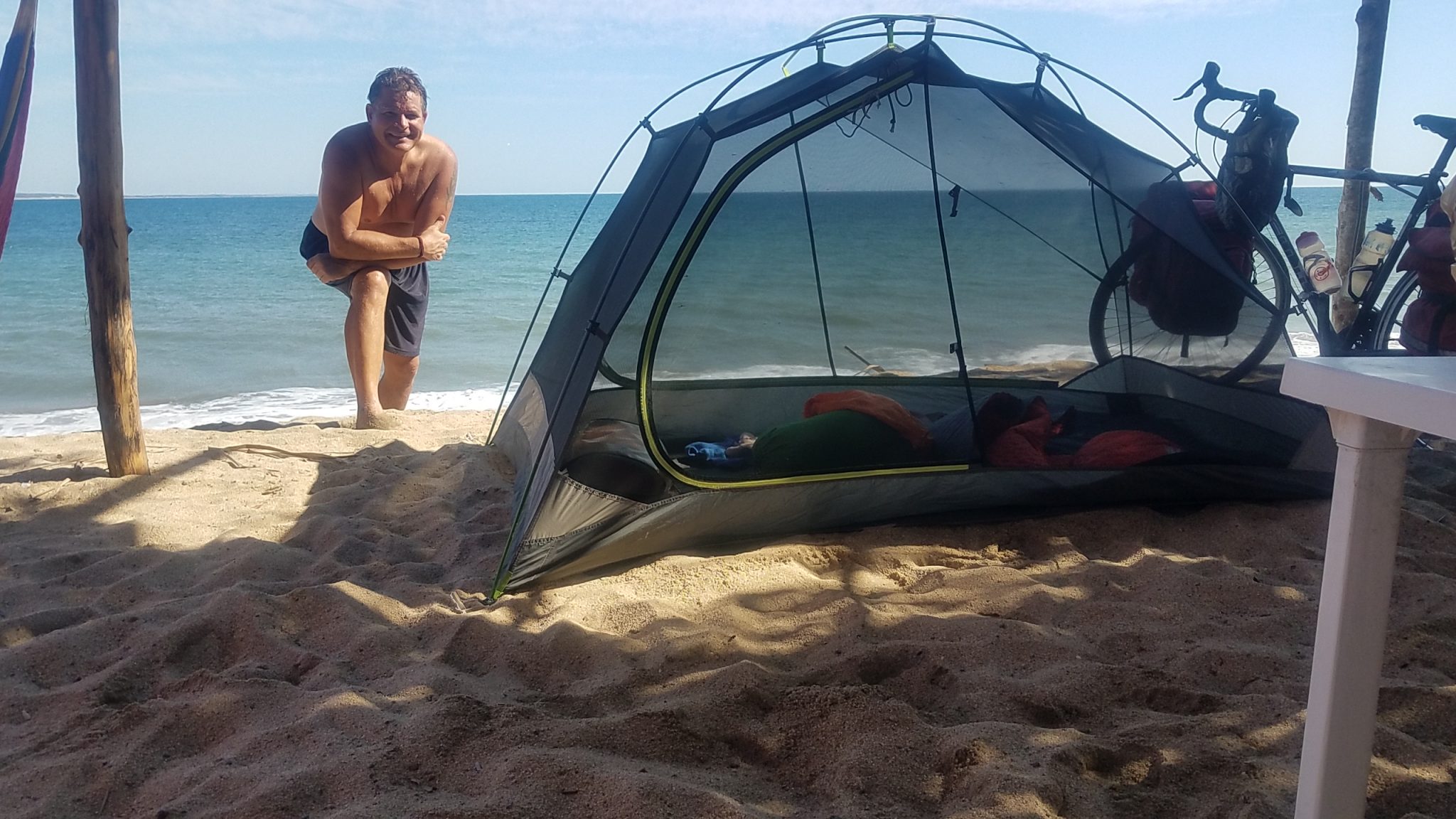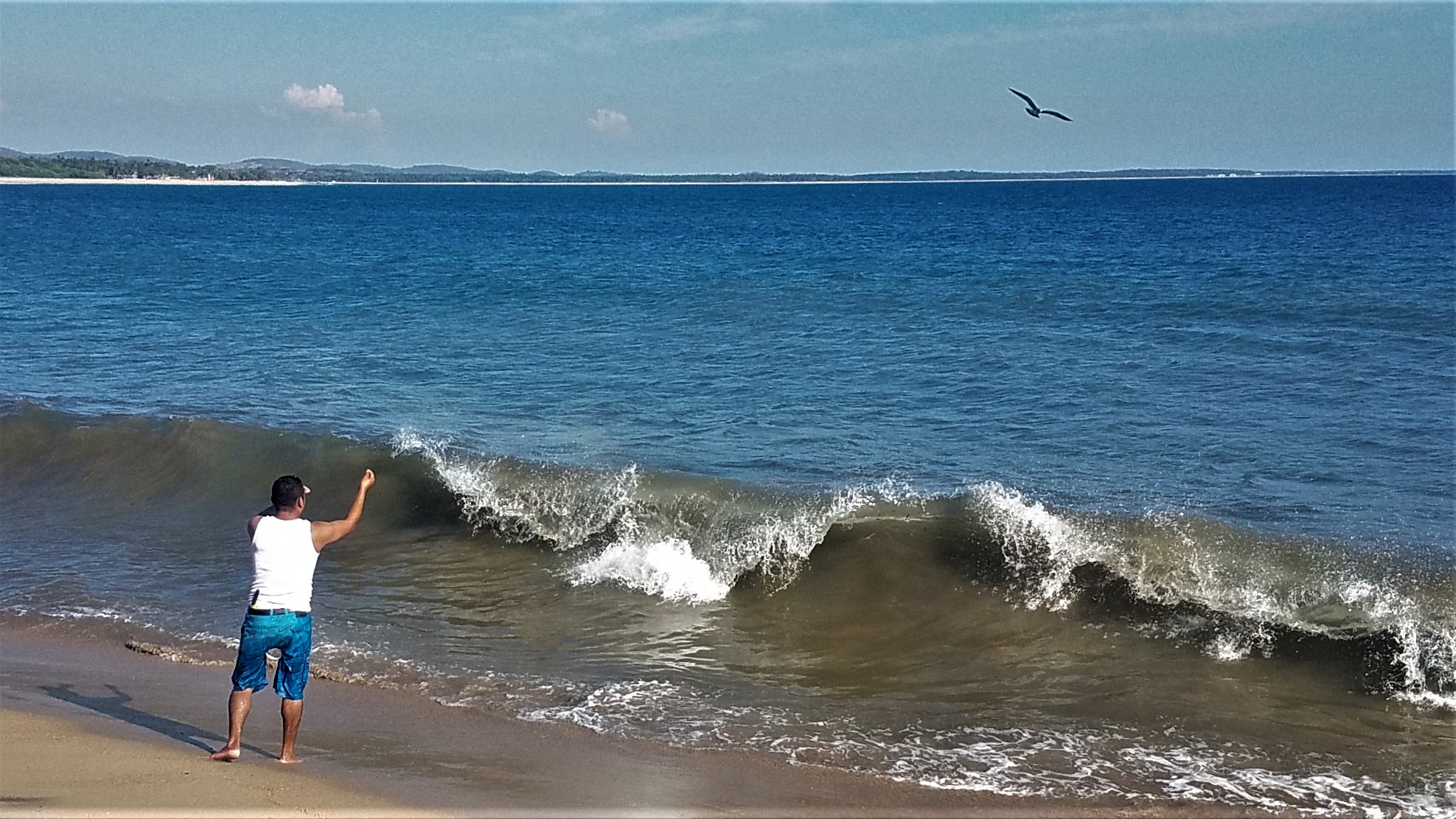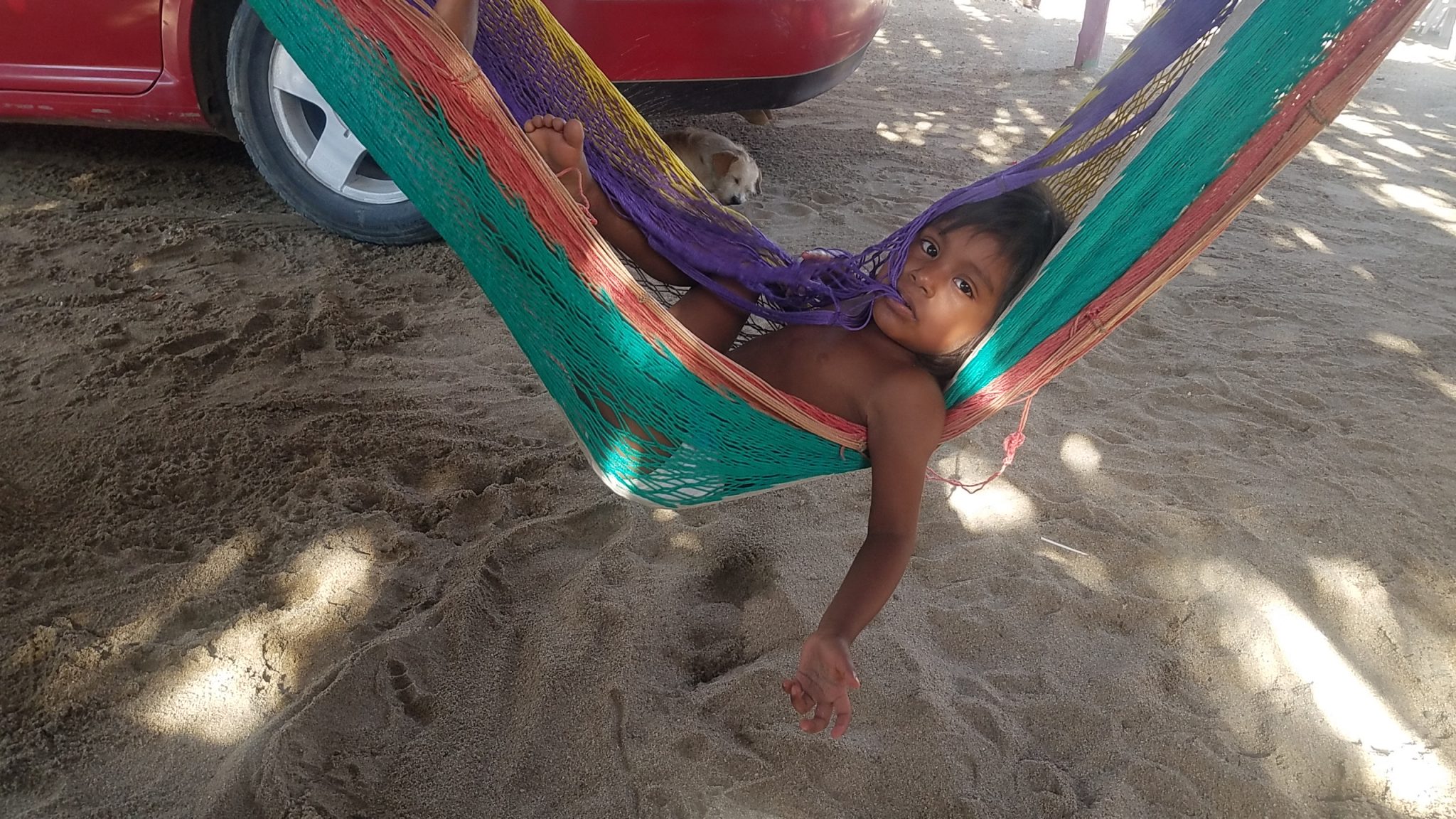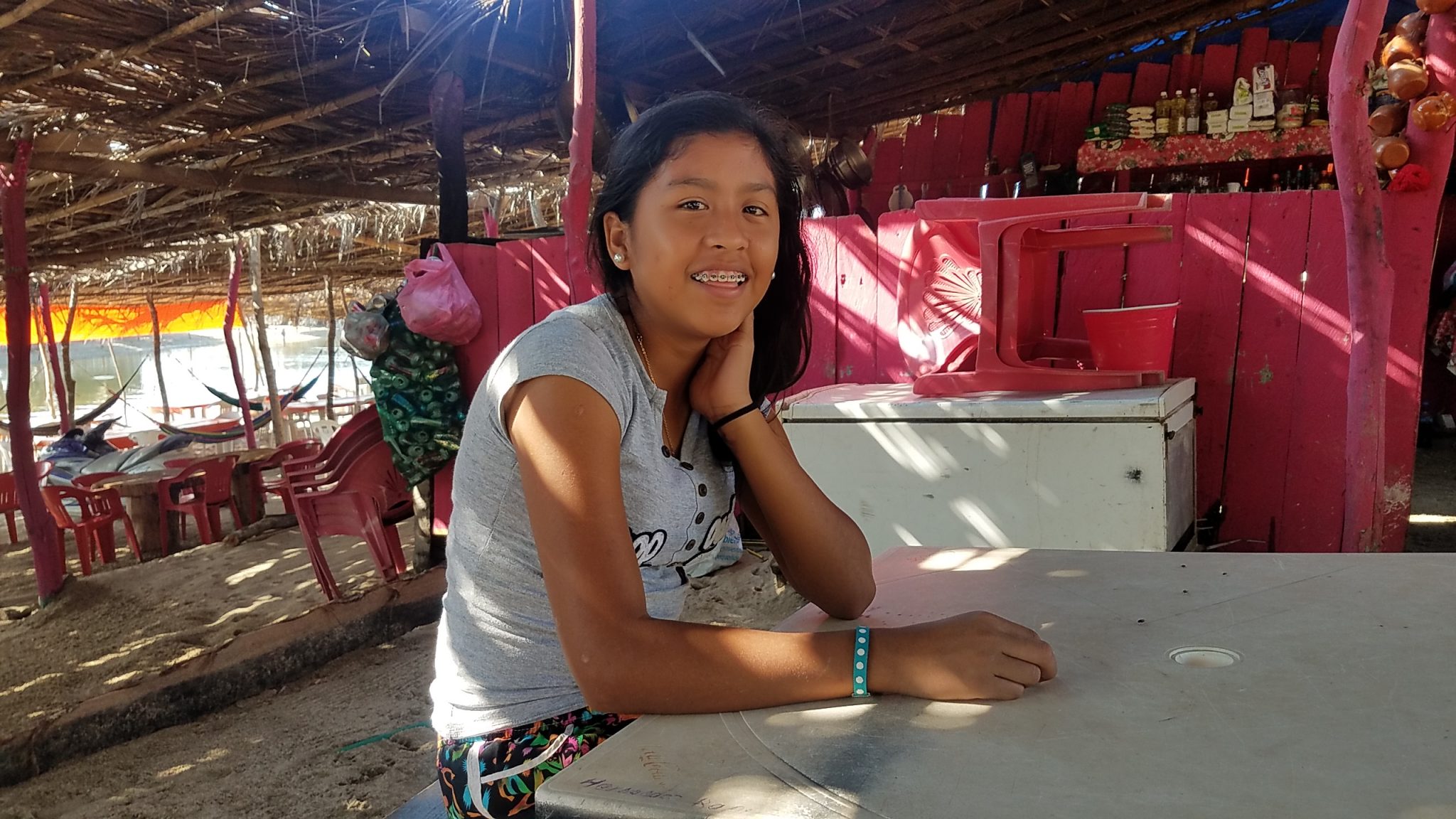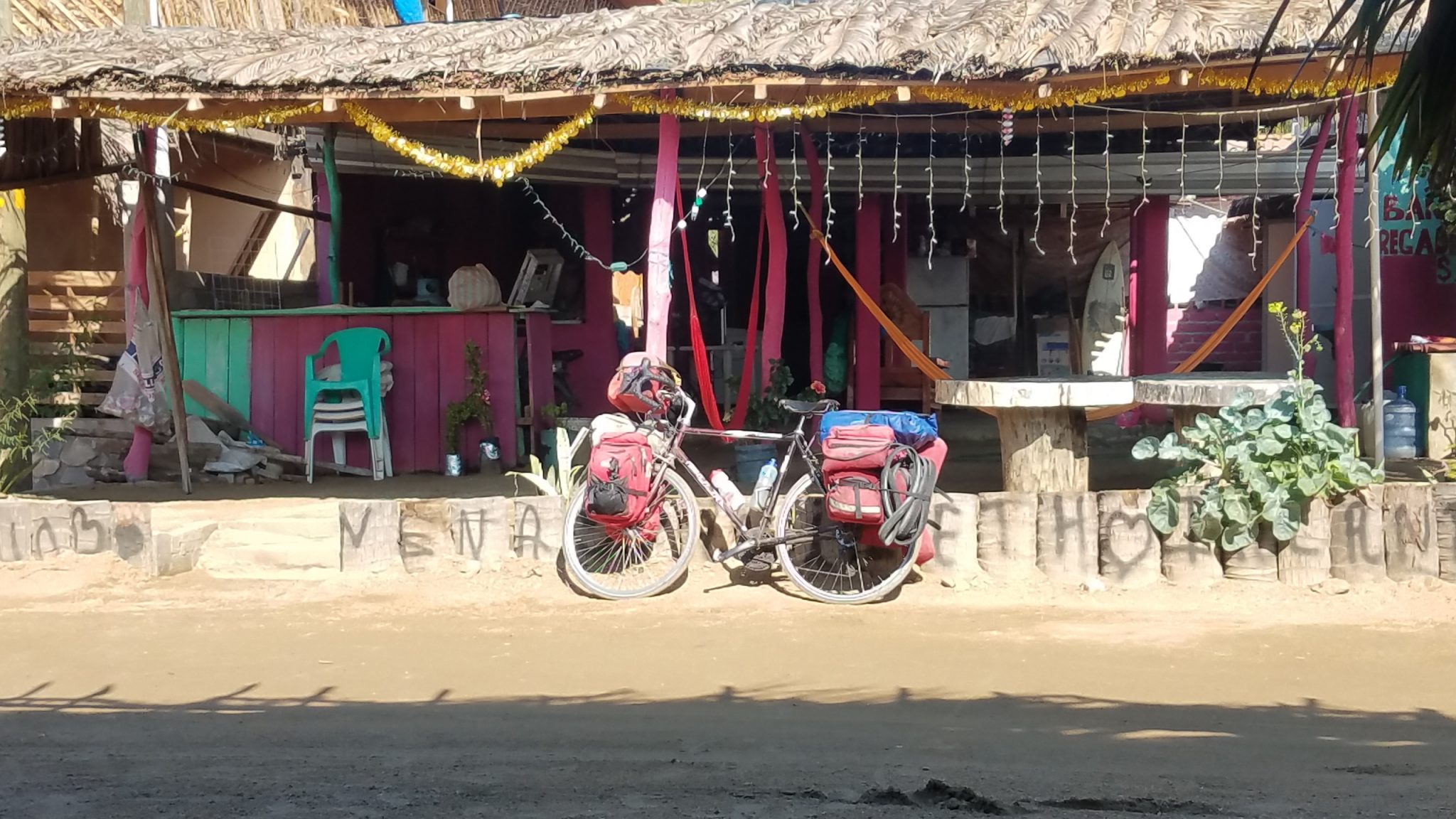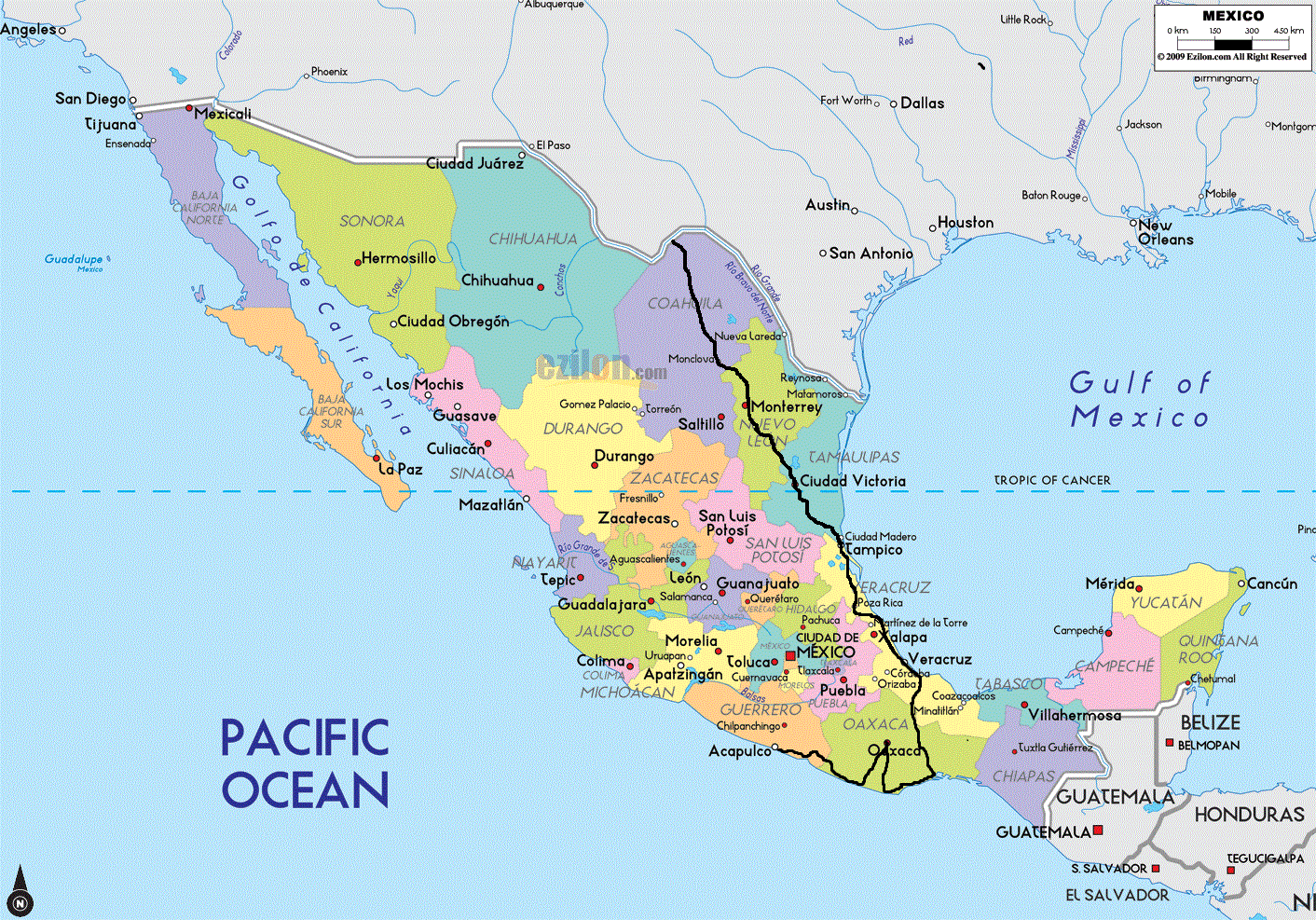Beaches and Sunshine
I finally left Oaxaca and entered Guerrero state, returning to the Pacific Coast by bus again. The hills of central Mexico are just too much for me these days. As I mentioned, the road rises 12,000 feet in 100 km so it’s quite a climb. I know my limitations and they are getting more limited by the month.
So I got a seven hour bus ride (well, a van) to Puerto Escondido. Here is the van with my bike all squashed up on the roof. There were about 10 passengers in the van.
We stopped after about four hours for a break so I took some photos.
A little girl trying to dress her Barbie doll.
This woman was selling little bags of roasted pumpkin seeds so I bought a bag. That gives me a good excuse to ask for a photo.
The comedor, or small eating place where we stopped.
Arriving in Puerto Escondido I quickly found a hotel room by the beach. I walked onto the beach right as the sun was setting and this great photo just presented itself.
Puerto Escondido is one of the more touristy places I have been in Mexico. But it is not built up like Cancun so even though you see and hear a lot of tourists it’s not so bad. The place is pretty small. I stayed on part of the beach called Zicatela.
Surfing is big here with waves over 10 feet. Swimming is dangerous and though these signs say no swimming, I went in anyway. I don’t like being told what to do.
A shot of the main street by Zicatela beach. As you can see it’s pretty quiet, full of old retired white tourists (like me!)
Leaving Puerto Escondido I stopped for a coconut water after about 50 km and knowing I was near the ocean, happened to ask the lady if there was a beach nearby. She said yes and there were nice cabanas there. It was only 3:30 but I decided to check it out. The cabanas were great. Basic, but only 100 pesos, about 5 dollars, and right on the beach. There was a restaurant and everything, so I decided to quit early and took a swim in the ocean before having a great dinner. I was the only one there so I just laid in a hammock and sipped tequila for a good part of the evening. Here are the cabanas.
A fishing boat on the beach, which was called Roca Blanca, for the white rock you can see in the background.
The view from my hammock.
I met another cyclist, a guy named Kevin from South Africa. He left Mexico City a month ago and was headed for Patagonia in Southern Chile. Wow, that is so awesome. We talked briefly about travel in Central and South America. In particular I reminded him that you can’t ride across the Darien Gap which straddles Panama and Colombia. He will have to catch a boat.
The other cool thing Kevin had was a battery powered electric motor which helped him up some of the steeper hills. I really need to look into getting one of those. Here is Kevin and his bike. He travels extremely light, unlike me.
Here is a pic he took of me.
Tough Day in the Hills
The next day was a killer. I must be out of shape after two weeks of not riding because I was trying to get to the next town which was 70 km away. With an elevation gain of 500 meters I figured it would be a tough day but certainly not beyond my capabilities. I don’t know if it was the heat, the hills, or my condition but it was the toughest day I’ve had on this trip. I was so exhausted I could hardly stand up and almost passed out several times. The heat and humidity were relentless. I was struggling to walk my bike up mild gradients that I normally zoom up no problem. I finally stumbled into the town at 6:30, right at sunset and found a cheap hotel. No a/c just a ceiling fan. It was a small town so no restaurants were open. I just snacked on peanuts and passed out.
At the height of his career Arthur Rubenstein, one of the world’s most renowned concert pianists, said: “If I don’t practice for one day, I know it. If I don’t practice for two days, the orchestra knows it. If I don’t practice for three days, the whole world knows it.” I think the same applies to bike touring. Not riding for two weeks is like starting over. I may as well have taken two months off. Now it will be a struggle to get back in shape.
The next day I decided to slow it down. An easy 20 mile day, I thought, but again the hills and heat sapped my energy. I could barely walk my bike up the steep hills without feeling light headed. Again I felt like I was going to faint several times. I was drinking a lot of water so I knew I was not dehydrated but I just had no energy. I got to the next town early, at 4 pm and decided to bus it for the next few days. As long as the heat, humidity and hills were bad, I needed to take it easy. I will slowly build back up to my former shape but it was scary out there. I’ve never felt so awful those two days.
Meanwhile, I passed by this sign for Neurotics Anonymous. I didn’t know they had such things. It would be interesting to go and see what they talk about.
As I struggled into one town a guy drove by and said to stop at the next restaurant and he will buy me a refreshment. So I struggled on for a bit and sure enough, he was waiting at a small cafe. His name is Cupertino and he is a retired school teacher. He bought me a beer and helped me find a hotel. The next day he treated me to breakfast and helped me find a bus to the next town. What a great guy!
I was really afraid I might have a heat stroke or something so I got a bus for 50 km. I was crammed in the back. The seats are made for very small people. Here was my view from the back.
I arrived in the town of Cuaji and there was some celebration going on. I guess in Mexico when there is a holiday people dress up and dance in the streets for money. I gave this guy $1.
Cuaji is actually a short name for the town. The complete name is below.
Yes, that’s Cuajinicuilapa, which is pronounced (I think) Kwa-he-nee-qwee-LA-pa. It refers to some tree that grows in the area, so I’m told.
Cuajinicuilapa is the center of the afromestizo culture. Escaped slaves from the Spanish moved into this area and supposedly a slave ship sunk nearby so the survivors stayed and populated the area. The resulting racial mix is very different from the rest of Mexico’s, a mix of African, indigenous, and Spanish blood. Most people here are a lot darker than in the rest of Mexico.
Living on the Beach
The next day I took a taxi for 50 km. The bus wait was 3 hours which was too long to wait. It was so great. I was just smiling–sitting down flying by at 80 km/hour. We drove for an hour which is about a days ride for me. The best part was when we got to the next town, Marquelia, I rode 3 km to the beach, playa La Bocana and camped out right on the beach. In fact I was little too close, as the tide came in the waves crashed right into my tent. I had to pack up and move back several feet.
I knew I was in the right place when they advertised cold coconut water and micheladas.
Here is my campsite on the beach. it was actually not that great. The pounding surf shook the ground and the noise kept me awake most of the night.
Fishing is the main industry there, obviously. there are about 100 families that live there. This guy was one of several fishing in the evening with just a line a lure. Many people fish all night long and sleep all day. The fish are more active at night apparently.
A boy fishing at sunset.
I made friends with the family where I pitched my tent. They let me camp for free as long as I had dinner there. So I had fried lobster in garlic. The family lived there and ran a restaurant. The father was a fisherman while his wife ran the restaurant. They have two daughters and the older daughter has a 3 year old. So cute.
Here is the younger daughter. She wanted to learn English so I taught her a few words.
The older daughter cleaning up.
My bike in front of their “house”. It is pretty basic. They have electricity but the toilets are hand flush, meaning you have to dump a bucket of water in the bowl when you are done. No tanks or anything like that. It is common in rural parts of the world.
The next few days were easier. It was not as hilly but still hot and humid. I limited my riding to about 45 km/day whereas I would normally plan on 80 km/day.
I finally arrived in Acapulco and plan on staying a couple days to catch up on some errands and check out the scene. At first glance it seems like everything is about 40 years old. I’ll post a more comprehensive report next time. Meanwhile the plan is still to follow the coast to Puerto Vallarta and then Mazatlan over the next several weeks. Here is my current location.
